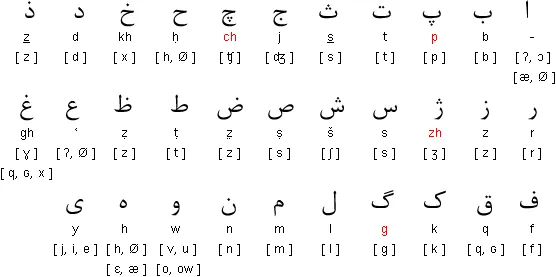Understanding the Basics
Persian, or Farsi, is written using a script derived from Arabic. While it might seem daunting at first, with practice, you'll be surprised at how quickly you can grasp it.
Key Points:
- Right-to-left: Persian is written from right to left, unlike English.
- No capital letters: Persian doesn't differentiate between uppercase and lowercase letters.
- Vowels: Unlike English, Persian doesn't have letters for vowels. Instead, diacritics (small marks) are used to indicate vowel sounds.
The Persian Alphabet
Here's a simplified introduction to Persian letters. Remember, the shape of a letter can change depending on its position in a word (beginning, middle, or end).
Additional Notes
- The letters 'آ' and 'ئ' are considered variations of 'آ' and 'ی' respectively, and are often omitted in character counts.
- Vowel sounds are represented by diacritics placed above or below the consonants.
- The Persian alphabet is derived from the Arabic script, and many of the letters are shared between the two languages.
Practice Time
Let's try writing some simple words:
- آب (āb): water
- کتاب (ketāb): book
- مرد (mard): man
- زن (zan): woman
Remember:
- Start from the right side.
- Connect the letters smoothly.
- Practice writing these words multiple times.
Challenges and Tips
- Directionality: Getting used to writing from right to left can be tricky.
- Vowels: Understanding the vowel system takes time.
- Letter shapes: Different positions of a letter can be confusing.
Tips:
- Start with basic words and gradually increase difficulty.
- Listen to Persian pronunciation to help with letter sounds.
- Use flashcards or online resources to practice.
- Find a language partner to practice speaking and writing.

